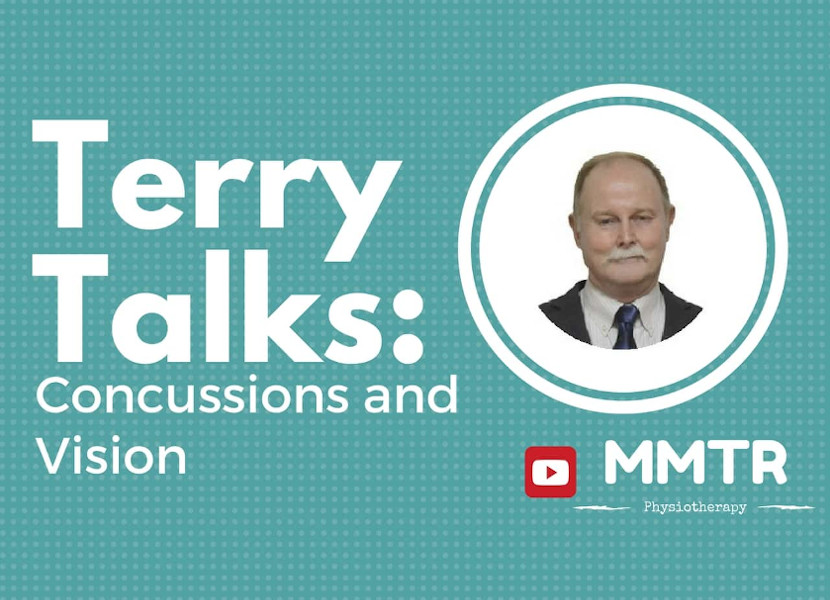For this month’s Terry Talks we will be discussing Visions and Concussion. Vision can play an enormous role with concussion. When someone thinks about concussions and vision, they will often think of convergence or divergence which is the way the eyes function together; whether they can rotate in or rotate out in sync. Another visual symptom is when people lose field of vision such that they actually cannot see what is going on in their periphery vision, which is very disconcerting and causes them to tighten in response.
There is a lot more to visual symptoms than these issues. There can be times when the eyelid is constantly contracting, and therefore closing, so the person has a lot of difficulty keeping their eyes open. Concussions can cause problems with light such that bright lights or certain coloured lights can be very painful to look at. I have also seen cases where the vision becomes (to use the computer term) pixelated such that the patient can only see small points of clarity. Another issue is when the eyes have difficulty focusing, not just binocular vision, but actually monocular vision (each individual eye will not focus properly).
Everyone wonders what could have happened to cause the vision problems. Obviously, there could be the true brain damage but there is another factor that can occur: the neck muscles tightening. You can’t have a concussion with the neck muscles tightening, it’s just not possible. What will happen is that those tight neck muscles can affect specific cranial nerves. Muscle does not go into the brain anywhere, but it can pull on fascia that does go into the brain and can affect specific nerves. These muscles can also affect blood flow to the brain, literally to the visual cortex.
It is possible to clump several symptoms together based upon which cranial nerves are affected. The good news is that quite often people will have an overwhelming number of symptoms, but they all stem from one cranial nerve problem, which is a huge consolation for such a horrible scenario since all of the symptoms can be brought down at once. There is so much more to learn in this area, but it’s exciting that there is much more going on than previously understood.
I am a strong advocate for vision therapy, but what I’ve found from working with a very prominent optometrist is that getting the neck muscles to relax cuts down the number of vision therapy treatments by about 50%, which is enormous. Therefore, it is important that the neck gets fixed first, then one can begin vision therapy.
The purpose of vision therapy is the improve the ability of the eye muscles to control the eyes, but that is very difficult to achieve if those muscles aren’t receiving the right signals because their nerves are being affected by tight muscle. That’s why you need to fix the neck first! The same principle can be applied to blood flow. Vision therapy also stimulates the brain which will be increasing blood flow to those areas of the brain, but if the arteries to the brain aren’t function properly because they are being constricted, then one can only improve by so much. It is important that the basic system is functional before visual therapy, that’s the key. Otherwise it can become a very prolonged situation; I have seen people who have gone through two or three years of vision therapy and they are still frustrated because they think vision therapy didn’t work, which isn’t true. It was just done in the wrong order.
Thank you very much for joining us again for this month’s Terry Talks. If you liked this article you can check out the accompanying video on the MMTR Physiotherapy YouTube page.

